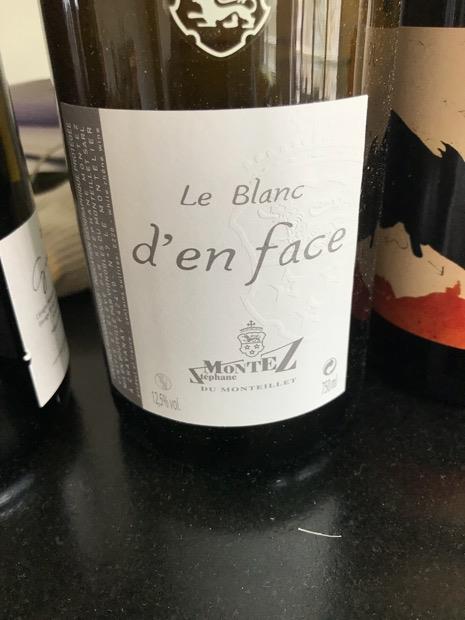
External search
Google (images)
Wine Advocate
Wine Spectator
Burghound
Wine-Searcher
Vintages
2022
2020
2019
2018
2016
2015
2014
From this producer
Show all wines
All tasting notes
|
| Drinking Windows and Values |
| Drinking window: Drink between 2024 and 2028 (based on 5 user opinions) |
| Community Tasting History |
| Stéphane Montez / Domaine de Monteillet Producer websiteWhite Blend"White blend" means the wine is made from a blend of two or more different white varieties - or in some cases a blend of pink or red varieties that are vinified white, ie. without any skin contact.
A blend of Antao, Arinto, Rouperio. France Vins de France (Office National Interprofessionnel des Vins ) | Pages Vins, Directory of French Winegrowers | French Wine (Wikipedia)
Wine Scholar Guild vintage ratings
2018 vintage: "marked by a wet spring, a superb summer and a good harvest"
2019 vintage reports
2021: "From a general standpoint, whether for white, rosé or red wines, 2021 is a year marked by quality in the Rhône Valley Vineyards. Structured, elegant, fresh and fruity will be the main keywords for this new vintage."
2022 harvest: idealwine.info | wine-searcher.comRhône Guide to the wines, wineries and appellations in the Rhone Valley The Rhône Valley/Le Vins de la Vallée du Rhône (Comité Interprofession des vins AOC Côtes et vallée du Rhône)
### Wine Scholar Guild's Rhône valley vintage charts & ratings ###Northern Rhône Guide to the wines and appellations of the Northern Rhone Valley -
The Rhône Valley/Le Vins de la Vallée du Rhône (Comité Interprofession des vins AOC Côtes et vallée du Rhône)
Regional History:
Phocaean Greeks established viticulture in the Rhone as far back as 600 BC, but until the 14th century the wines were not seen outside the region. The establishment of the Avignonese Papacy (1305-1377) brought fame to the region's wine-so much so that their Burgundian neighbors to the north banned wines from the Rhone in 1446, a measure that effectively cut off trade with England and other Northern European markets for over 200 years. Stretching southward from Lyon to just south of Avignon, the Rhone produces a wide variety of wines, with the appellations north of Valence producing the least (in volume), and the towns south of Montelimar producing prodigious amounts. As in other regions, the most interesting wines come from small farms. Saint-Joseph, in the northern Rhone, extends for some distance between Condrieu in the north to Saint-Peray in the south. The reds are made from Syrah and the rare whites from Marsanne and Roussanne, and Viognier.
### 2017 vintage ###
"The first red wines already tasted in the Northern Rhône promise a beautiful vintage, with a quality close to the 2015 or even the 2009 vintage" - NEWRHÔNE MILLESIMESVin de Pays des Collines RhodaniennesThe expression “Vin de Pays” (country wine) first appeared legally in 1930, but the concept of Vin de Pays as a specific category had to wait until 1973 to be officially born. A Vin de Pays is a Vin de Table from a delimited area, which has to follow a certain number of quality control rules (stricter than for Vin de Table, but less strict than for AOC, the Official Controlled Appellation). There are 141 Vin de Pays denominations in France, with some obviously more obscure than others.
Les Collines Rhodaniennes (the Rhône Hills) is an area which straddles five departments: Rhône, Ardéche, Isère, Drôme and Loire. It produces primarily red wines from Gamay, Syrah, Merlot and Pinot Noir. This is basically the area lying at the back of Northern Rhône and its famous vineyards.
“A Vin de Pays was (originally) meant to be a quaffing wine that should display the broadest characteristics of its region’s greatest wines. It was to have a rustic charm and be a joy to drink, but nothing more. However, the Vin de Pays system, which had fewer restrictions than the AOC system, encouraged creative winemakers to produce wines in a way that they felt best expressed their terroir….The success of the Vin de Pays system lies not in creating more appellations but in freeing producers from them, which allows the most talented individuals to carve their own reputation.” Tom Stevenson |
|




